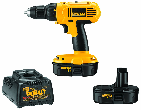Before beginning any wiring project it is best to understand different types of wiring and what they are best used for, along with how to handle or cut the different types of cables.
There are several different types of electrical cables. One is called nonmetallic (NM) cable, another is armored cable and then there is conduit. While a conduit actually is not a cable it does serve as a housing unit for wires to run through, protecting the wires and such should be considered as an electrical cable. Each serves a purpose and works well for what it was created for.
When working with NM cable you will find that it is easy to work with. It is easy to cut and can be installed quickly. However, you will want to be careful removing the sheathing and not cut the wire insulation. It is always best to use the proper tools when working with cables. When working with NM you will need to have a utility knife, lineman's pliers and a side-cutting plier. If you do cut the wire insulation cut off the damaged part of the wire and start again. Working with NM cable you will find that it is best to strip the sheathing before cutting it. That way if you make a mistake you can simply cut off the damaged part without having to re-cut the cable to length.
Armored cable is a cable that is not as strong as a cable in a conduit or as flexible as a nonmetallic cable. Armored cable is flexible; the good thing about armored cable is that it protects the cables better than the nonmetallic cable. Yet, it won't turn nails away or protect the cables as well as conduit. The tools that are needed to work with armored cable would be side-cutting pliers, hammer, screwdriver, channel-joint pliers, and an armored cable cutter.
With armored cable there are two different types of cable: BX cable and MC cable. BX cable actually has no ground wire; it is the sheathing that provides a path for the ground. While the MC cable has a insulated grounding wire that is green.
Conduit is actually the most durable the three for running wire. It does cost more to use and takes more time to run cable when using conduit. When working with conduit you will need fittings for the conduit, wire, lubricant, screwdriver, lineman's pliers, hacksaw, conduit reamer, and fish tape.
How to decide what type of cable to use can be confusing but a general rule to follow is in knowing what you are running cable for. For instance if you are going to run cable around wall corners and around door jambs you would want to use something that will bend easily so the decision would be to use NM cables.

Cordless, Compact, and Powerful! DeWalt's 18-volt drill-driver kit packs a big punch in a small package, with a powerful high-performance motor tucked away inside a compact design. A great addition to the tool chest of any professional or DIYer! Check out DeWalt 18-Volt Drill/Driver Kit today!
Troubleshooting a garage door is the first step in fixing a problematic garage door. Since this is something that is not ...
Discover MoreThere will be times when you simply do not have enough electrical boxes in your home. When faced with such a situation, ...
Discover MoreWhether you are going to be simply running a few wires, installing a new electrical outlet, or doing some really major ...
Discover MoreThere are currently no comments for this tip. (Be the first to leave your comment—just use the simple form above!)
Copyright © 2025 Sharon Parq Associates, Inc.
Comments